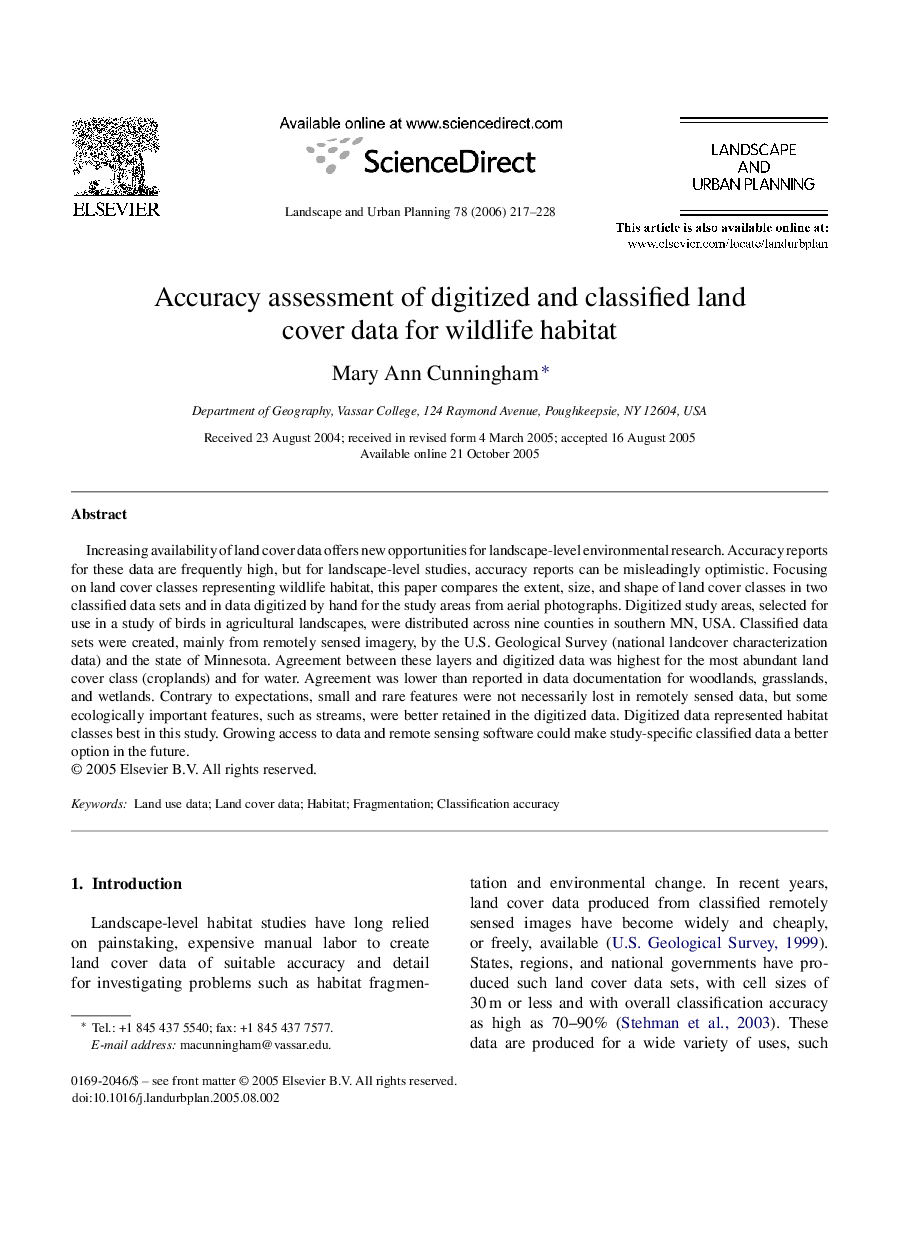| Article ID | Journal | Published Year | Pages | File Type |
|---|---|---|---|---|
| 1050519 | Landscape and Urban Planning | 2006 | 12 Pages |
Increasing availability of land cover data offers new opportunities for landscape-level environmental research. Accuracy reports for these data are frequently high, but for landscape-level studies, accuracy reports can be misleadingly optimistic. Focusing on land cover classes representing wildlife habitat, this paper compares the extent, size, and shape of land cover classes in two classified data sets and in data digitized by hand for the study areas from aerial photographs. Digitized study areas, selected for use in a study of birds in agricultural landscapes, were distributed across nine counties in southern MN, USA. Classified data sets were created, mainly from remotely sensed imagery, by the U.S. Geological Survey (national landcover characterization data) and the state of Minnesota. Agreement between these layers and digitized data was highest for the most abundant land cover class (croplands) and for water. Agreement was lower than reported in data documentation for woodlands, grasslands, and wetlands. Contrary to expectations, small and rare features were not necessarily lost in remotely sensed data, but some ecologically important features, such as streams, were better retained in the digitized data. Digitized data represented habitat classes best in this study. Growing access to data and remote sensing software could make study-specific classified data a better option in the future.
